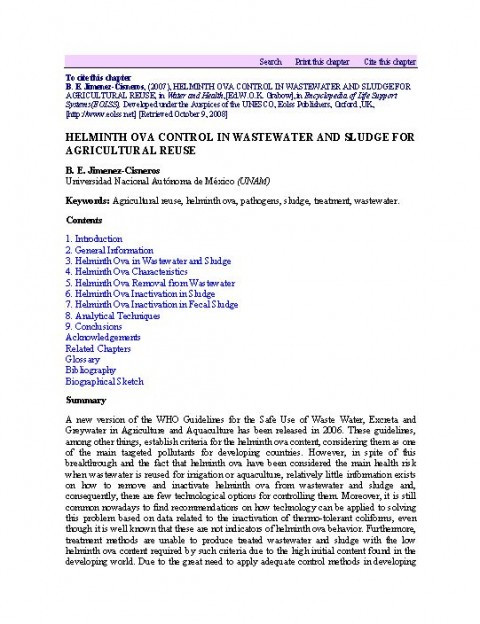Helminth ova control in wastewater and sludge for agricultural reuse Jimenez-Cisneros, B. E. (2007)
Bibliographic information
Jimenez-Cisneros, B. E. (2007). Helminth ova control in wastewater and sludge for agricultural reuse Chapter in Water and Health (editor: W. O. K. Grabow) in Encyclopedia of Life Support Systems (EOLSS), UNESCO, Eolss Publishers, Oxford, UK
Filter / Tags
Food security and productive sanitation (WG5)Faecal sludge treatment processesEnglish
Downloads
Helminth ova control in wastewaterland and sludge for agricultural reuse
Type: application/pdf
Size: 1.06 MB

